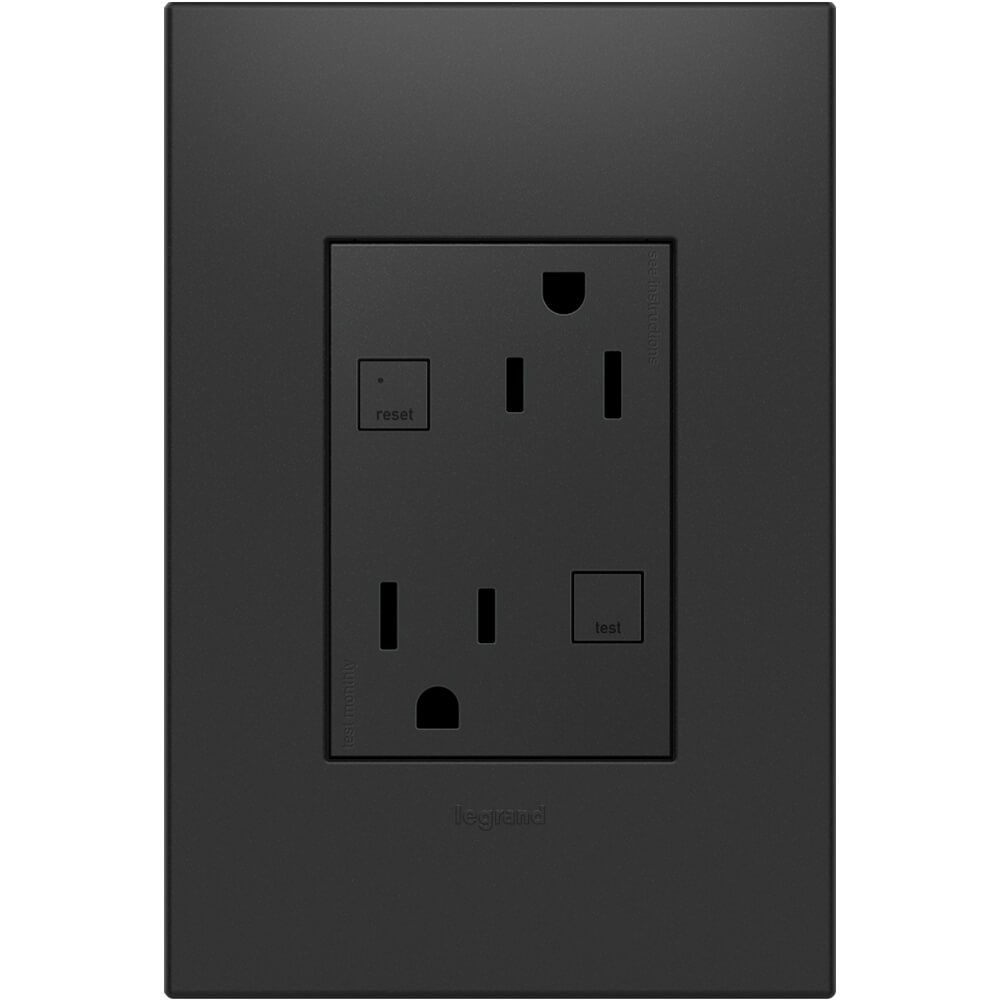GFI vs GFCI: What’s the Difference and Where Do You Actually Need Them?

GFI vs GFCI: Clearing Up the Confusion
You’ve probably seen both terms, GFI and GFCI, used when talking about electrical outlets, and it’s not always clear if there’s a difference or which one is correct. That confusion is common, especially when the two are often used interchangeably. So, is there a difference?
Here’s the answer, simplified: GFCI stands for Ground Fault Circuit Interrupter, and GFI is simply a shortened version of the same thing. They both refer to the same type of outlet designed to shut off power when a ground fault is detected. GFCI is the more technically accurate term, but GFI is still used regularly on job sites, in packaging, and in conversation.
Why do people treat them like they’re different?
While there’s no actual difference in function, the terms have taken on slightly different meanings in casual use. GFI is often used when referring to the outlet itself, especially the ones with “test” and “reset” buttons. GFCI tends to show up in codebooks and discussions about breakers that protect entire circuits. Over time, that shorthand stuck, even though it’s not technically more accurate.
At the end of the day, whether you say GFI or GFCI, you’re talking about the same safety technology.
Now that we’ve cleared up the terminology, let’s look at how these outlets work and where you need them.
What Do GFCI Outlets Actually Do?
GFCI protection isn’t just about a specific outlet style. It’s a built-in safety feature designed to prevent electrical shock. GFCI stands for Ground Fault Circuit Interrupter, and whether it’s in the form of a GFCI outlet or a GFCI breaker, the goal is the same: to cut power the moment it detects electricity escaping the intended circuit.
That kind of imbalance can happen if electricity comes into contact with water, a damaged wire, or even a person. It only takes milliseconds for a GFCI to trip and shut off power, which is why these devices are required in areas where shock risk is higher.
Where code typically requires GFCI protection:
- Kitchens (especially near the sink)
- Bathrooms
- Laundry areas
- Garages
- Outdoor outlets
- Basements and crawl spaces
Pro Tip:
If you’re replacing an existing GFCI outlet during a renovation, code requires you to install another GFCI outlet in its place.
Whether you’re wiring a new home or bringing an older one up to code, GFCI outlets are one of the easiest ways to protect people from dangerous shocks.
GFCI Outlet vs GFCI Breaker: What’s the Difference?
Both a GFCI outlet and a GFCI breaker offer ground fault protection, but they do it in different places. A GFCI outlet protects only the outlet itself and any outlets downstream on the same circuit. A GFCI breaker, on the other hand, provides protection for everything on that entire circuit, right from the electrical panel.
So, when do you use each one?
- Use a GFCI outlet when you only need protection at a specific location, like a bathroom or outdoor receptacle.
- Use a GFCI breaker if you want to protect an entire circuit, which might include multiple rooms, fixtures, or hardwired equipment.
This is especially helpful when outlets are hard to access or when you want to avoid the visual clutter of reset/test buttons throughout a space.
Do You Need a GFCI Breaker for a GFCI Outlet?
No, and in most cases, you shouldn’t use both. A GFCI breaker and a GFCI outlet are two ways to achieve the same protection. Stacking them on the same circuit can cause nuisance tripping or make it harder to diagnose which device tripped and why.
Here’s the takeaway:
Choose one or the other based on your wiring setup and where you want protection. If you’re not sure what’s already in place, a quick check of your panel or outlet labels can help, or talk to a licensed electrician.
Still comparing options? Stop by White Star’s showroom or shop electrical supplies online to see both outlet and breaker options side by side.
Can GFCI Outlets Go Bad?
Yes, GFCI outlets can go bad over time. Like any electrical component, they can wear out, especially in areas with frequent moisture, temperature changes, or heavy use. If a GFCI outlet won’t reset, trips without cause, or fails the test procedure, it likely needs replacement.
It’s also possible for a GFCI to be installed incorrectly, which can prevent it from working as intended. For example, if the “line” and “load” wires are reversed, the outlet may still supply power, but its safety function won’t work. That kind of miswiring can give a false sense of security, which is why proper installation is so important.
If you’re unsure whether a GFCI outlet was wired correctly or functioning properly, it’s worth having it checked by a licensed electrician. Or, visit White Star’s electrical supply warehouse to find replacement outlets and wiring accessories designed to meet current code and keep safety simple.
How to Test and Reset a GFCI Outlet
One of the most useful features of a GFCI outlet is that it can be tested and reset without tools. That’s what those two buttons, usually labeled “Test” and “Reset,” are for.
Here’s how to check if your outlet is working properly:
- Press the “Test” button. The power should shut off.
- Plug in a device (like a nightlight or phone charger) to confirm that power is off.
- Press “Reset.” The power should come back on.
If the outlet doesn’t trip or reset, it may need to be replaced. Regular testing is especially important in older homes or in areas where outlets are exposed to moisture and wear. It only takes a few seconds and can help prevent dangerous situations.
GFCI Outlets Have Come a Long Way
If you’re picturing an outdated or bulky outlet, it’s worth knowing that today’s GFCI outlets come in sleek, modern designs that don’t compromise on safety. Options like the Adorne Collection offer flush finishes, screwless wall plates, and clean lines that work well in kitchens, bathrooms, and other visible areas, without sacrificing code compliance or protection.
And because many GFCI models now self-test every few seconds, you get built-in peace of mind that your system is doing its job without needing constant attention.
Whether you’re planning a new build or upgrading a single outlet, GFCI outlets are one of the simplest ways to improve both safety and style.
White Star Supply Has the GFCI Options You Need
From budget-friendly basics to high-end styles with sleek finishes and smart features, White Star carries a wide range of GFCI outlets and electrical supplies.
Need wiring, tools, or help choosing the right setup?
Contact us or stop by the showroom and let us help you find exactly what fits your project.


